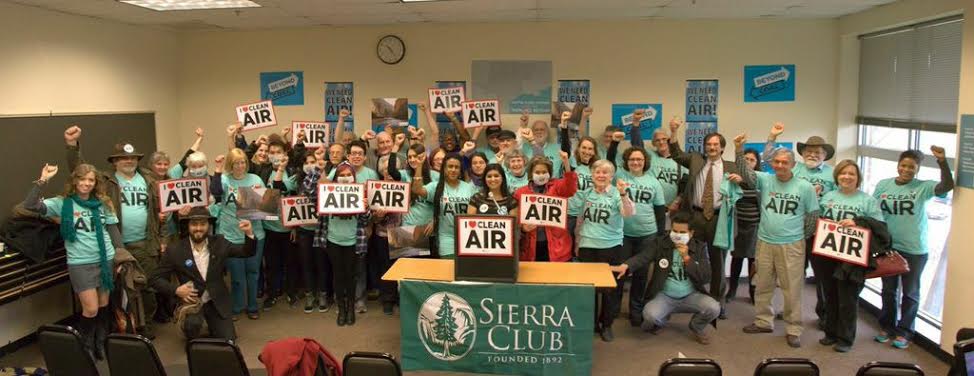On January 13, nearly 150 Texans turned out for a public hearing in Austin on the EPA's newly proposed Regional Haze Rule to clean up sulfur dioxide pollution from Texas power plants that sullies the air in Texas as well as in neighboring Oklahoma and Arkansas. Two days later and 400 miles to the north, some 100 Oklahomans, Arkansans, and Texans turned out at the EPA haze hearing in OK City. Above, Sierra Club activists at the Austin hearing; below, the Sierra Club crew in OKC.
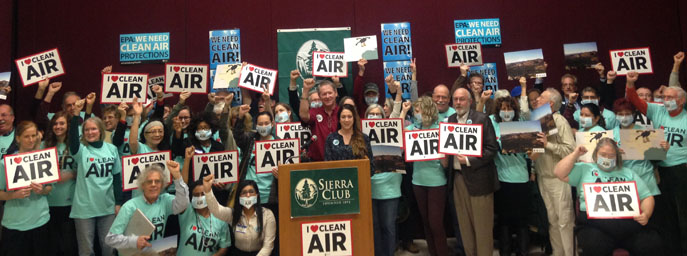
"Both hearings were a huge success," says Sarah Sharif, below at left, a Texas-based organizer for the Sierra Club's Beyond Coal campaign who spearheaded the effort to mobilize citizens to attend and testify at the hearings. "We'd thought there might be a lot of opposition to the EPA's proposal, but in Austin only 2 of the 63 citizens who spoke were opposed, and in Oklahoma City only 3 out of 52 spoke in opposition to the plan." The Sierra Club was the lead organization in turning out members of the public to both hearings.
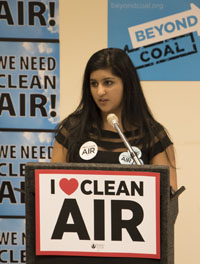
"Folks came to Austin from San Antonio, Houston, and several cities in central Texas to show their support for the Regional Haze Rule the EPA put forward after rejecting the do-nothing state plan," Sharif says. "And in Oklahoma City, people came out from Dallas, Little Rock, Lawton, Tulsa, Norman, and other cities around Oklahoma, Texas, and Arkansas to share their voices."
Just before Thanksgiving last year the EPA finally stepped in to do something about sulfur dioxide pollution in Texas, and the new plan tackles nine coal plants across the state -- some of which are among the oldest and dirtiest coal-fired power plants in the country. Sierra Club volunteers and staff sprang into action, holding town hall events in the three affected states to mobilize grassroots support for the EPA proposal.
Regulators have long known that Texas pollution crosses state lines. Texas power plant emissions affect the Wichita Mountains in Oklahoma, the Caney Creek Wilderness in Arkansas, and Big Bend and Guadalupe Mountains national parks in Texas. The new rule will reduce Texas haze pollution by more than a quarter-million tons of sulfur dioxide annually -- almost two-thirds of the total amount of sulfur dioxide emitted by all of the Lone Star State's power plants.
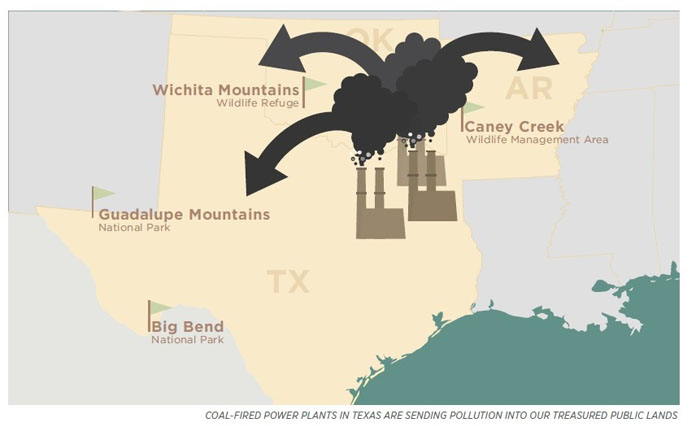
"With a fast turnaround in a famously difficult time to organize, we worked hard to gain momentum through the holiday period so that we could hit the ground running in January in preparation for the hearings," Sharif says. In addition to the town halls, the Club reached out to citizens online and over the phone to recruit bus captains, event captains, and nail down event logistics.
"Even with competing rallies at the Austin capitol with the opening of the legislative session, the roar of our rally at a local college campus was heard loud and clear," Sharif says. "Filing into our press room, the energy was electric as we started our press conference with speakers talking about the public health benefits of the Regional Haze Rule and why we need to protect our Texas gem Big Bend." The rally concluded with a "teal march" (check out the video) down to the EPA hearing room.
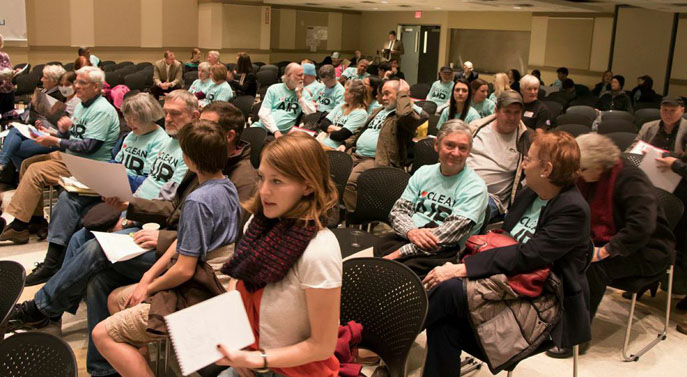
At the hearing, Lon Bozarth, below, a Lone Star Chapter volunteer and property owner near Big Bend, testified that "[p]rotecting our national parks isn't just about safeguarding our natural heritage -- to me, it's about protecting my home. I'm 65 now, and I was five when I first went to Big Bend. It breaks my heart to see the dramatic changes that have happened in my lifetime in a place that is my home."
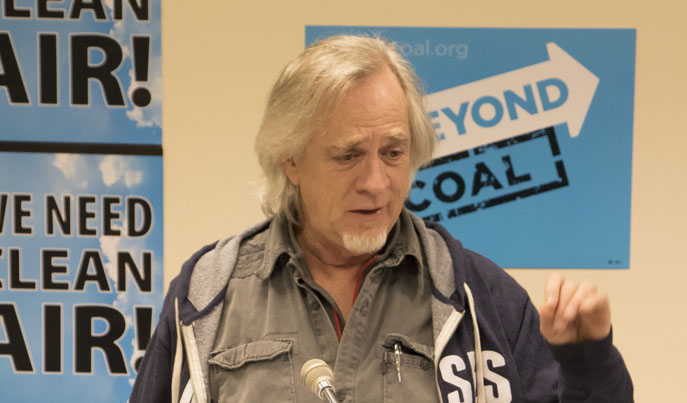
"It was a very powerful day," says local activist Al Braden, who also testified. "A huge wave of activists in blue Clean Air shirts filled the hearing room with a loud and clear message from a diverse range of perspectives that this pollution of our shared air has to stop. We need clean air and we need change in Texas to take it seriously." Braden says it was very moving, after the official hearing ended, to stand in a circle of candles and hear each person's story of how important this work is and why it matters. "We have many rallies and shout about what we don't want. Listening to each other talk about what we do want was a sacred time."
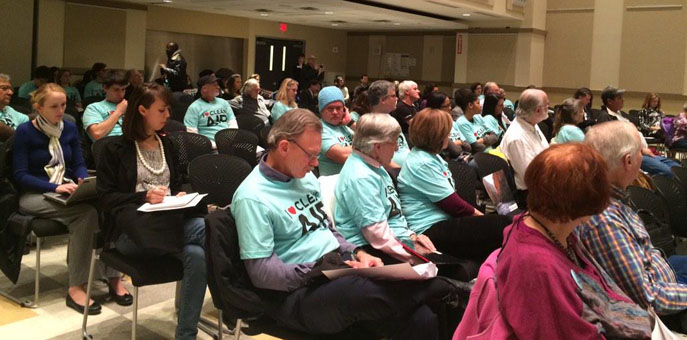
There were also events competing with the January 15 hearing in Oklahoma City, including a Texas Environmental Quality Commission hearing in Dallas, but a busload of passionate Texans still ventured north to join Arkansans who also journeyed over state borders to share their voice with Sooners from around the state at the OKC hearing. As in Austin, Sierra Club activists marched down to the EPA hearing room clad in teal "I love Clean Air" t-shirts. (Here's the video.)
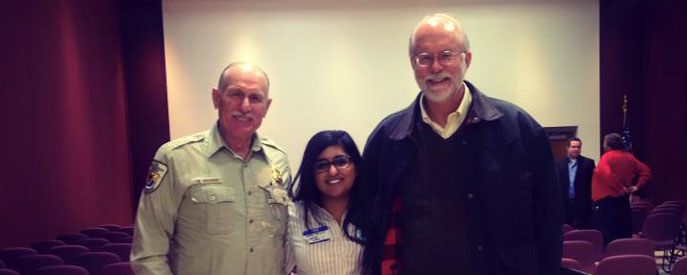
"Oklahoma has a Texas air pollution problem," Oklahoma Chapter volunteer leader Bill Cunningham testified. (That's Cunnigham at right, above, with Sharif and Ralph Bryant of the U.S. Fish and Wildlife Service, who works at the Wichita Mountains Wildlife Refuge.) "You don't need to be an environmentalist in order to be concerned about pollution from Texas that the prevailing winds bring to us every day. On clear days, on my way to and from work, I see haze -- not smoke, not dust, not humidity."
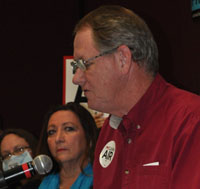
Fellow Sierra Clubber and Friends of the Wichitas activist Bobby Williamson, at right, said, "On our star tours that we do at the Wichita Mountains Wildlife Refuge, we can't see as many stars at night. At times it looks like the Smoky Mountains at the refuge, but it's not the Smoky Mountains at all -- it's all the haze from coal-fired power plants."
In addition to turning out for the Austin and OKC hearings, Sierra Clubbers have submitted over 9,000 written comments to EPA in support of the Regional Haze Rule. "This is one of the strongest rules the EPA has laid down," Sharif says. "Rules go through rigorous examination and pulling apart, but the fact that we've submitted so many comments and had such good turnouts at both hearings makes me very optimistic."
The public comment period on the Regional Haze Rule has now been extended to April 20. Submit your comment here.
